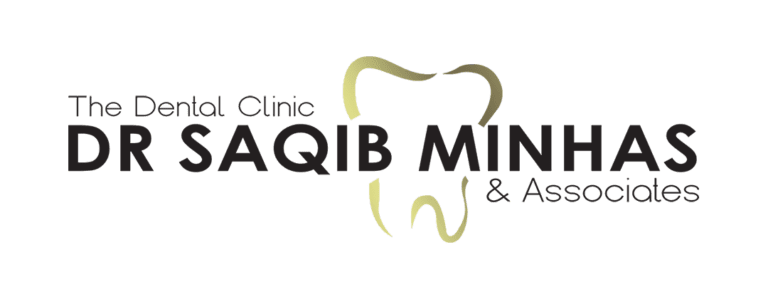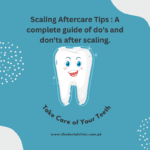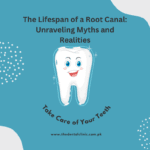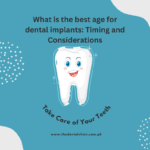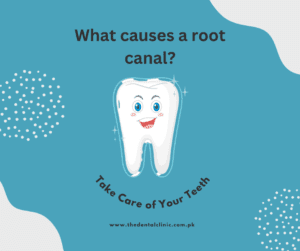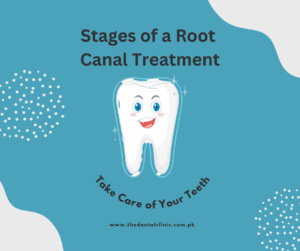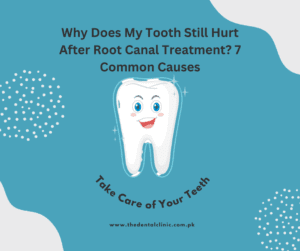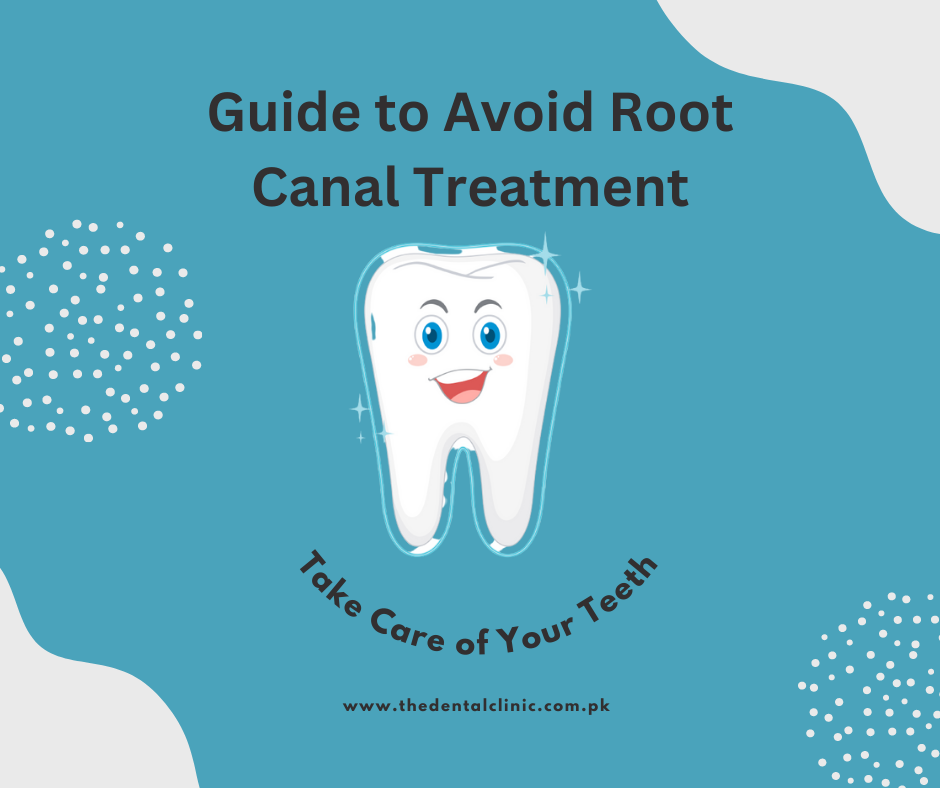
A Comprehensive Guide to Avoid Root Canal Treatment
Straight, white teeth are often taken as evidence of a healthy mouth and routine dental care. This is not always the case, though. Your teeth may appear to be in good shape, but that does not mean you are practising good oral hygiene. It takes work to maintain a healthy set of teeth. When your mouth is clean and healthy, you are less likely to experience issues like tooth decay and bad breath. If left untreated, tooth decay may contribute to discomfort, infection, and even tooth loss. Maintaining a healthy set of teeth necessitates going in for regular dental check-ups and cleanings as well as diligent at-home care, including brushing and flossing.
UNDERSTANDING THE CAUSES OF ROOT CANAL TREATMENT
What is root canal treatment?
A root canal is a procedure used to save a tooth that has been severely damaged or decayed. Getting a root canal may be necessary if your tooth has a deep cavity or if it has been damaged.
If you are like most patients, you want to know how to avoid needing a root canal. Although this treatment is beneficial for preventing advanced tooth decay and repairing trauma to a tooth, most patients want to know how to avoid needing one. If you take good care of your teeth, you can usually avoid getting one.
Common causes of root canal treatment
There are multiple reasons why you may require root canal therapy. Some of the most reported ones include:
- Deep decay: If your cavity reaches your tooth pulp and infects it, the only way to save your tooth is with a root canal treatment.
- Multiple dental procedures on the same tooth: A tooth that has been treated multiple times, but still causes issues for you, requires root canal treatment.
- Faulty crown: Faulty crowns may contribute to inflammation, impaction, and secondary caries, which may require root canal therapy to resolve.
- Fractured or broken tooth: When it comes to fractured teeth, in most cases, the only solution is a tooth extraction. However, in some cases, a fractured or broken tooth can be saved using root canal therapy.
How do tooth decay and gum disease lead to root canal treatment?
People often wonder how tooth decay and gum disease lead to root canal treatment. Allow us to explain and clarify these concerns.
The tooth has three layers: enamel (the outermost), dentin (the middle layer), and nerve tissue (the innermost layer) (deepest layer). If your tooth’s enamel or dentin is decayed, a simple filling will suffice to repair the cavity. Nonetheless, if the cavity is not treated, the decay will spread to the tooth’s innermost layer, the nerve tissue. Root canal treatment is required to repair the tooth at this point.
If you have a cavity that has reached nerve tissue, you may experience some or all of the following symptoms:
- Toothache when pressure (such as chewing) is applied to a tooth.
- Tooth sensitivity in response to hot and cold temperature
- Tooth discoloration
- Gum inflammation and/or sensitivity
Moving on to gum disease and how it may contribute to severe tooth damage that may require root canal therapy, when the pulp tissue inside your tooth becomes severely infected, the infection may spread through openings at the root’s tip (apex) and outside the tooth. The infection can then spread to the periodontal ligament, which anchors the tooth to the bone and gum tissue surrounding it. The infection may then spread to the gum tissue, resulting in periodontal disease or even a painful gum abscess. At this point, you may experience pain, even severe pain that will pinpoint the affected tooth.
It is also possible for the infection to spread through the exact opposite route. In this case, an infection that originated in the gums (typically due to periodontal disease caused by a buildup of plaque) may have travelled through small passageways called accessory canals, which are located between or on the sides of a tooth’s roots. The infection may then spread to the tooth pulp. It is even easier for disease to spread when teeth are fractured.
Prevention through good oral hygiene
Importance of brushing your teeth twice daily
No matter your age, it is essential to brush your teeth at least twice per day. There are numerous advantages to doing so. Here are four examples.
- It eliminates bacteria: Harmful oral bacteria will be destroyed or eliminated if you brush your teeth twice daily. If you brush your teeth in the morning and do not brush again for the rest of the day, bacteria will begin to erode the enamel of your teeth and weaken their gums and roots, allowing cavities to form, thereby contributing to bad breath.
- It decreases saliva: When awake, we produce more saliva than when asleep. This is because saliva helps create a barrier against plaque and bacteria, it prevents tooth decay. Therefore, brushing your teeth in the evening or just prior to bedtime reduces bacteria and saliva production while we sleep. This reduces morning bad breath by reducing the acids that build up while you are sleeping.
- It safeguards your gums: One brushing is not sufficient to maintain a healthy mouth. In actuality, the less you brush your teeth, the more damage you do to your gums. Plaque, bacteria, and tartar are harmful to gum health and can cause infections and bleeding.
- It improves your general health: Dentists and general medical practitioners are now aware that numerous diseases are directly related to poor oral health. Poor oral health can result in cardiovascular disease, diabetes, and osteoporosis. In pregnant women, it has also been linked to preterm labor and low birth weight.
Proper technique for brushing teeth
Toothbrushing must be done correctly otherwise it fails to serve its purpose. Here is a step-by-step guide to help.
- First, choose a toothbrush with a small, soft head, hold it with your fingers (not your fist), and squeeze a pea-sized amount of fluoride toothpaste onto the bristles.
- Keep the bristles at a 45-degree angle up from the gum line and hold them gently against the outside of your upper teeth.
- To clean your teeth and gums, use light, back-and-forth strokes with the toothbrush, or an elliptical (circular) motion.
- Remember to brush in between your teeth as well: Use a sweeping motion to remove debris from the gums.
- After you have cleaned your teeth for one brush width, switch to the adjacent area and do it again. Do not stop until you have scrubbed the outside of your upper teeth in their entirety.
- Proceed to the lower teeth. When brushing again, tilt the brush at a 45-degree angle towards the gum line. Complete your cleaning of the outside of your lower teeth.
- Move on to the upper teeth’s inner surfaces. Clean the inner surfaces of your upper teeth with gentle but thorough strokes, tilting the bristles up towards the gums.
- Slide inside your lower teeth. Turn the brush upside down and do it again.
- It is time to move on to the teeth now: Brush the grooves and fissures of your back teeth while holding the bristles flat against your molars. Use this method on both your upper and lower teeth.
- Lastly, brush your tongue gently to eliminate odor-causing bacteria.
Importance of flossing daily
If you want to reduce your risk of developing cavities and gum disease, flossing once a day should be part of your regular oral hygiene routine. Periodontal disease and cavities both necessitate visits to the dentist, which can be costly. When it comes to regular cleanings, the fewer problems there will be to deal with the more proactive and dedicated you are to prevention.
Flossing comes with many advantages. Here are some of them.
- Removes food and plaque from hard-to-reach areas between teeth and along the gum line.
- Effectively removes bacteria that cause bad breath and cannot be eliminated by just toothbrushing alone.
- Scrapes away plaque from below the gum line, which can eat away at tooth enamel and harden into tartar and can cause teeth discoloration).
- Prevents tooth decay.
- Helps keep gums from becoming red, irritated, and swollen.
- Aids in warding off gingivitis, a mild form of gum disease.
Proper technique for flossing teeth
Flossing is something most people do not get the hang of. Here is a step-by-step guide on how you can do it correctly and effectively.
- Cut a length of dental floss between 18 and 24 inches long. The proper way to hold dental floss is to wind most of it around your two middle fingers. Use only 1 to 2 inches of floss between each tooth.
- Use your thumbs and index fingers to hold the floss taut.
- The dental floss should be inserted between the teeth. Move the floss up and down, gently brushing against the gums and each tooth’s surface. Avoid gently stroking the floss against your gums. Your gums may get cut or bruised if you use this.
- When the floss reaches the gum line, bend it into a C-shape at the tooth’s base so that the floss can reach in between the gum and tooth.
- As you move from tooth to tooth, repeat the process. Use a clean section of floss for each tooth.
How does using mouthwash help prevent cavities and gum disease?
Mouthwash can reduce plaque and gingivitis, fight tooth decay, and prevent cavities, as well as freshen bad breath. Oral hygiene can be significantly improved by using mouthwash. Fluoride-containing mouthwashes can even aid in remineralization.
However, there are several misconceptions regarding mouthwash. Here are some pros and cons of using mouthwash.
Pros:
- Improves bad breath: Food can ferment in your mouth, leaving bacteria and unpleasant odors behind. Therapeutic mouthwashes containing antimicrobials as well as essential oils, can be extremely effective at eliminating lingering odors.
- Can decrease tartar and gingivitis: In conjunction with regular brushing and flossing, mouthwash can assist in removing the pesky particles that cause gum disease.
- Fluoride fights cavities and tooth decay: Fluoride promotes remineralization and healthy teeth in mouthwashes.
Cons:
- Only conceals bad breath: The use of mouthwash alone will not eliminate bad breath. Only regular brushing and flossing can ensure excellent oral health. In addition, cosmetic mouthwashes may only provide a temporary freshening effect. Be sure to find good alcohol-free mouthwash.
- May cause mouth dryness: Opt for an alcohol-free formulation. Otherwise, mouthwash can inhibit salivation and exacerbate your condition.
Prevention through a healthy diet and lifestyle
Your teeth and gums are even more reflective of your diet than the rest of your body. When you consume sugary and starchy foods, you are not only nourishing yourself, but you are also feeding the bacteria in your mouth that can cause tooth decay and gum disease. Plaque is a thin, invisible, and adhesive layer of bacteria and other substances. It covers all your tooth surfaces. When sugars or starches in the mouth interact with plaque, acids are produced. These acids can attack your teeth for at least 20 minutes after eating. The tough enamel on the surface of teeth can be eroded by repeated assaults. This contributes to tooth decay. Plaque bacteria also induce an inflammatory response. This causes the destruction of the gums, bone, and other tooth-supporting structures.
Certain foods promote tooth decay. Other foods help prevent plaque formation. Here are some foods to seek out, and others to avoid.
Foods to eat
- High fiber fruits and vegetables: Fiber-containing foods help maintain healthy teeth and gums and cause salivation – your best natural defense against tooth decay and gum disease.
- Dairy products: The calcium and phosphates in dairy products help replenish minerals your teeth may have lost as an outcome of eating other foods. Additionally, they help rebuild tooth enamel.
- Black and green teas: Teas contain polyphenols that either kill or inhibit the growth of bacteria by preventing bacteria from multiplying and producing acid that erodes teeth.
- Sugarless gum: This is another excellent salivary gland stimulant that removes food particles from the mouth.
- Fluoride-containing foods: The use of fluoridated drinking water or any product made with fluoridated water is beneficial to dental health.
Foods to avoid
- Candies and sweets: If you consume sweets, be sure to opt for those that leave your mouth quickly. It is best to avoid sweets containing refined sugar.
- Sticky carb-containing foods: It is wise to avoid foods like soft breads and potato chips that can become lodged between your teeth.
- Carbonated drinks: Carbonated drinks are loaded with sugar and most of them contain phosphoric and citric acids that erode tooth enamel.
- Substances that cause mouth dryness: These include alcohol and numerous medications. Consult your dentist about using a fluoride rinse or fluoride gel for brushing your teeth if you are on medication that is causing mouth dryness.
Prevention through regular dental check-ups and cleanings
Why is a routine dental check-up necessary, especially for avoiding root canal treatment?
A routine dental exam is necessary to ensure that your oral health is in good condition and to detect any problems as early as possible. The most effective approach to oral health issues is prevention. A routine dental examination enables you to detect potential problems before they worsen and receive the necessary preventative and restorative care.
A routine dental examination and cleaning can help detect a cavity or cracked tooth early on. Call your dentist if you experience tooth discomfort between root canal treatment. Treating cavities as soon as they appear reduces tooth destruction and pump trauma, thereby preventing the need for root canal treatment.
What to expect at your dental visit?
People often feel intimidated by dental visits. Relax! Dental visits are nothing out of the ordinary. During your checkup, your dentist will enquire about your general health, the condition of your teeth since your last appointment, and any new or altered medications. They will examine your teeth, gums, and mouth and carry out any treatments, tests, or x-rays they deem necessary. They may proceed to question you about your lifestyle and offer advice on diet, smoking, alcohol consumption, and dental hygiene to improve your oral health. Depending on your needs, your dentist may inform you when you should return for your next checkup, which could be anywhere between three months and two years.
How frequently must you visit the dentist?
In general, the lower your risk of dental issues, the longer you can go between dental examinations. Those with good oral health will likely only need to visit the dentist once every 12 to 24 months, whereas those with more issues will require more frequent visits.
FREQUENTLY ASKED QUESTIONS (FAQS)
· Can I reverse tooth decay?
Generally, a cavity can be reversed if it is detected during the earliest stages of demineralization, the first step of tooth decay. However, once a physical cavity (hole or opening) develops in the tooth, it is impossible for the enamel to regrow on its own.
· Is root canal treatment painful?
Root canal treatment is not painful as the procedure is performed after the application of local anesthesia.
· How much does a root canal cost?
The cost of root canal treatment in Karachi ranges from PKR 10,000 to PKR 35,000. It differs based on the dentist who performs the procedure, the materials utilized, and hospital expenses/equipment.
· Can root canal treatment be avoided through good oral hygiene?
Yes! Regular brushing, flossing, and good oral hygiene are essential not only for your oral health, but also for preventing root canals.
· How can I tell if I have gum disease?
You may have gum disease if you notice your gums bleeding when you brush your teeth, floss, or consume hard food. Moreover, if your gums look swollen, red, and inflamed, there is a chance you may have gum disease.
